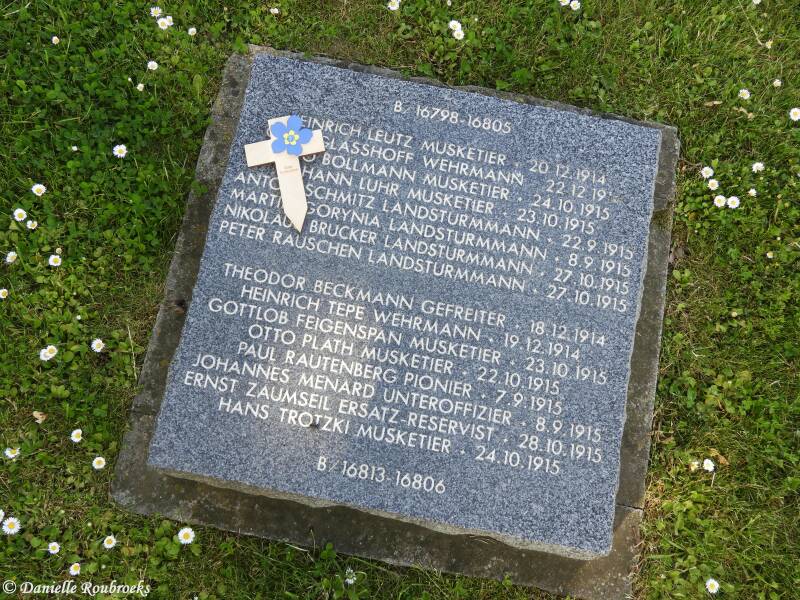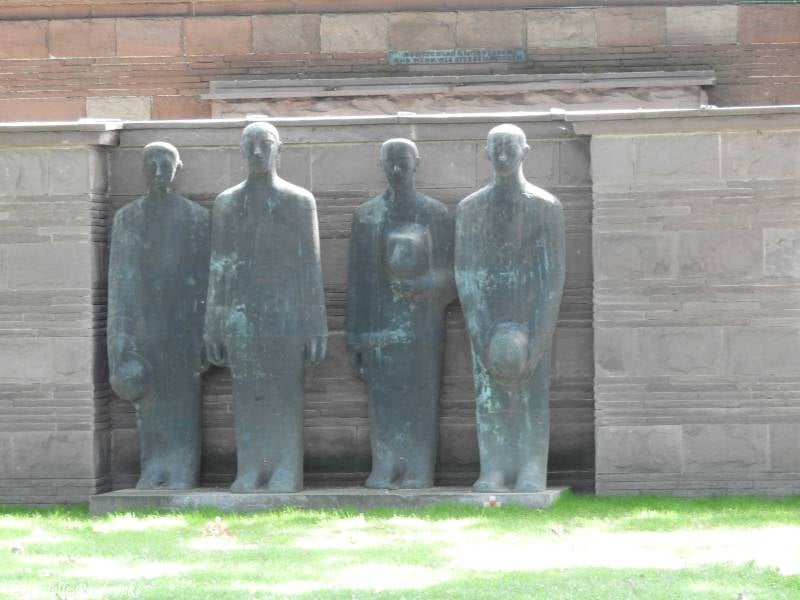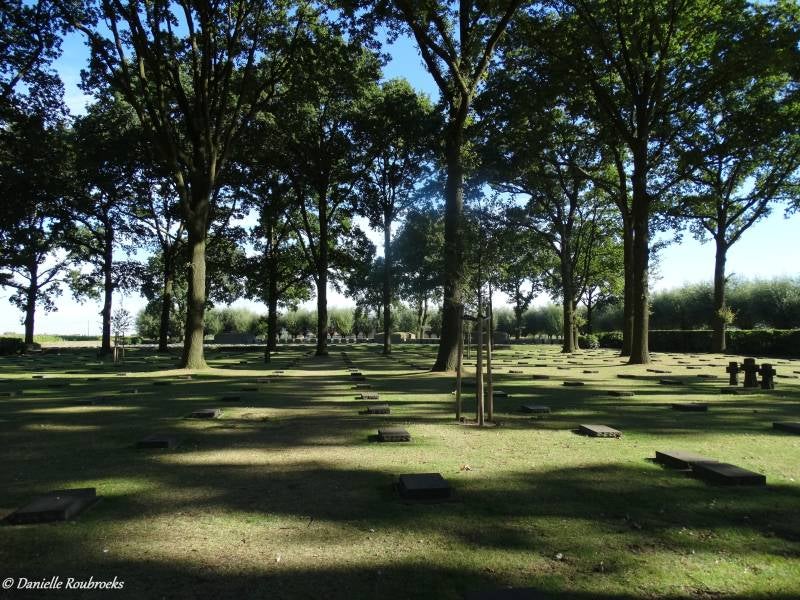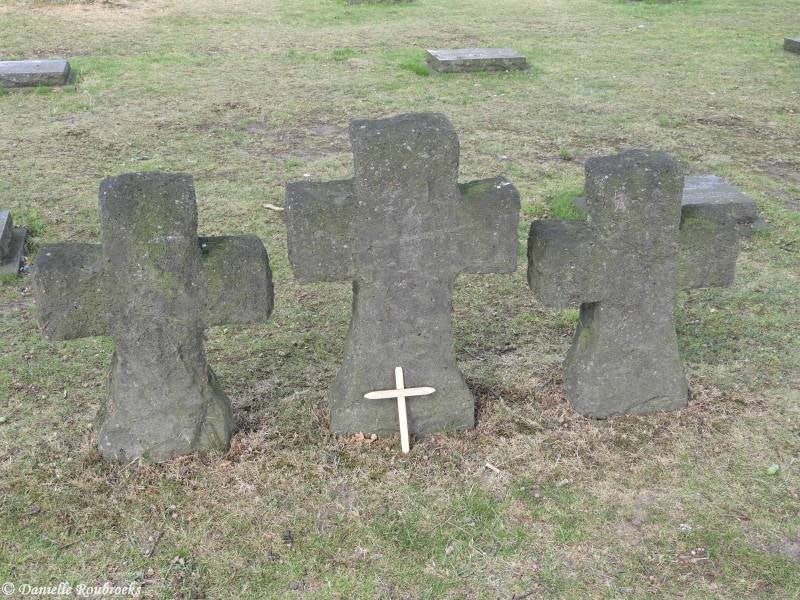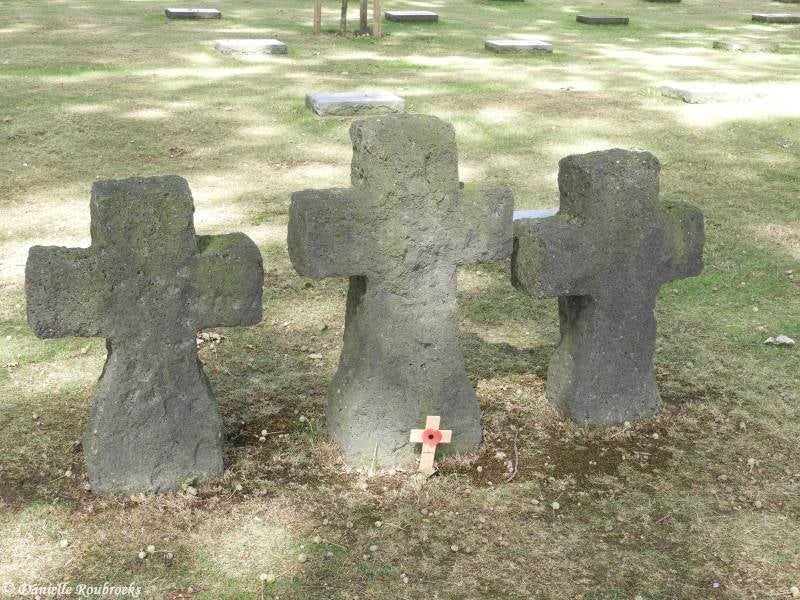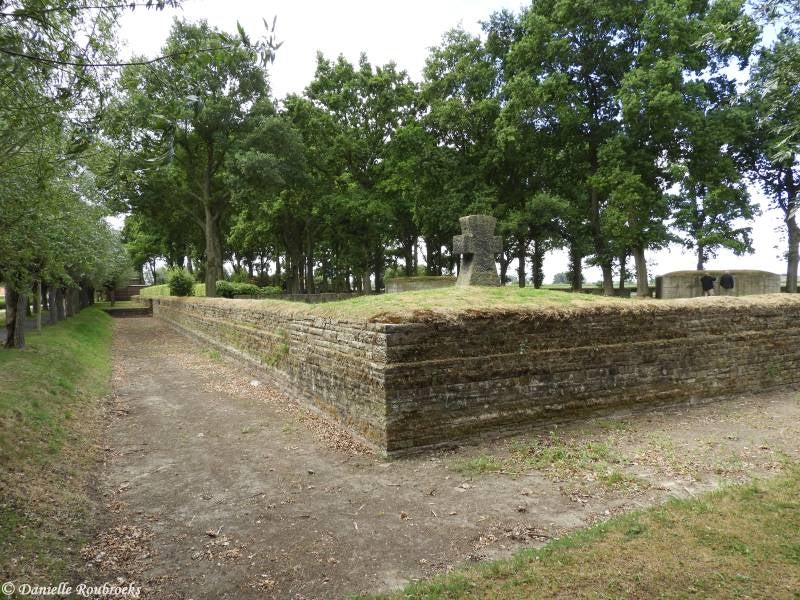Langemark Deutscher Soldatenfriedhof
History Information (Source: Wikipedia)
Deutscher Soldatenfriedhof in Langemark is particularly poignant because of its strength and simplicity. Over 44,000 Germans are buried behind the monumental gate made of pink Weserberg sandstone and almost 25,000 of these are buried in a mass grave. More than 3,000 student volunteers of the 22nd up to and including the 27th Reserve Corps found their last resting place here. They were killed in battle in October and November 1914 during repeated attacks in the First Battle of Ypres. The name of "Studentenfriedhof" (Student Cemetery) was given to the cemetery because of the large number of students among these volunteers.
At the entrance there is a heavy building reminding one of a bunker. It was erected in red Weser/Vesder sandstone and was meant to make the transition from everyday life to the cemetery itself and in that way create some distance. There are three rooms in the entrance building: the central passage and two side rooms. On the oak panels of the "room of honour" to the right, are inscribed the known names of 6,313 soldiers killed in battle who were buried in the original (lower part of the) cemetery.
Fencing the cemetery, there is a low wide wall made of the same stone as the entrance building. Pollard willows grow on street side (as a guard of honour) and the right part of the former poppy field is surrounded by a wide ditch symbolising the flooding of the Yser front.
Because the most place left was in the German military cemetery of Langemarck, all those non-identified exhumed soldiers from Belgium were buried there in a "kameradengraf" (comrade grave) during the period of 1956-1958. 366 graves behind the partition wall were moved to make room for the enormous grave. Almost 25,000 remains were buried here.
The coats of arms of 8 Belgian provinces lie in front of the grave (East and West Flanders were given the name of Flanders; Brabant was divided into Flemish and Walloon Brabant). In the centre, between the 8 coats of arms, there is a bronze wreath of oak leaves with the words "Ich habe dich bei deinem namen gerufen, du bisst mein" (I have called your name, you are mine) Isaiah (43.1). Around the mass grave, there are blocks with 68 bronze panels bearing the names of 17,342 non-identified soldiers who, based on archive research done, were almost certainly buried in this mass grave. The names are in alphabetical order, starting at panel 1 (left of the mass grave), then clockwise along the inside of the blocks up to panel 34, and then they continue anti-clockwise from the back of the panel along the outside.
The group of statues by the Professor at the Akademie der Bildender Künste (Museum of Fine Arts) in Munich originally stood against the former partition wall between the mass grave and the entrance building. At the back of the mass grave there was a group of statues of four mourning soldiers, standing with their backs against the wall. In that way the statues had to be regarded from a distance. The statues are very plain. The intention of the total image was to evoke reflection.
On the higher part of the cemetery, there are three restored German concrete shelters, partly above-ground, with the entrances directed towards the German line (north). To emphasise this defence line (Hindenburg line Langemark-Geluveld) even more, the bunkers were linked to large concrete blocks with, in front, a granite block bearing the names of the army divisions and student organisations which had helped to lay out the original cemetery in the 1930s.
The new reception site next to the cemetery shows the lives of the soldiers during the first months of war, the population on the move, the terror of the first gas attacks in April 1915 and how this cemetery was started and how it evolved. The reception site is a black tunnel 25 m long and 3 m wide. On the left-hand side, 7 screens show the history of this modest site. On the right-hand side there are 3 eye holes so that the cemetery can be seen from the dark tunnel. The plain design of the reception site, combined with authentic and new images make experience unique.
The names of the two British casualties can be found on a plaque to the left of the entrance, on the face of the first German memorial stone.
Private Albert CARLILL - 31006 - 1st/4th Bn. The Loyal North Lancashire Regiment - Died 04 November 1918 Age 19
DIED AS A PRISONER OF WAR AND WAS BURIED AT THE TIME IN LOUVAIN COMMUNAL CEMETERY BUT WHOSE GRAVE IS NOW LOST "THEIR GLORY SHALL NOT BE BLOTTED OUT"
Peter RAUSCHEN - Landsturmmann - 27 Oct 1915





